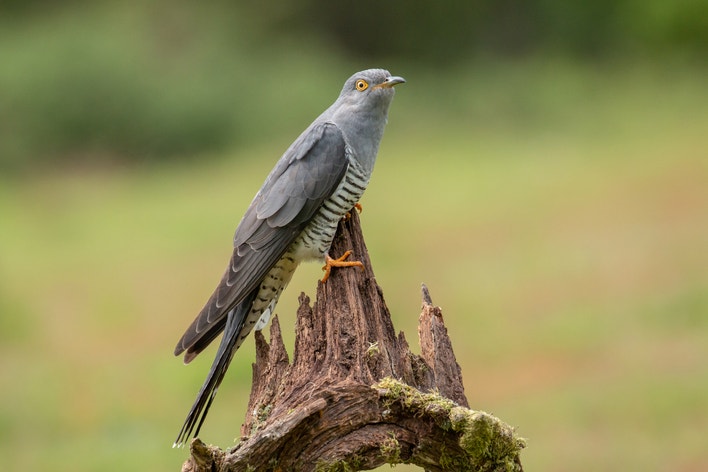Common Cuckoo





Common Cuckoo
Cuculus canorus
At a Glance
This is the famous bird of Europe whose voice is imitated by cuckoo clocks (and whose call, coo-coo, gave the name to the entire cuckoo family). It is well known as a brood parasite: females lay their eggs in the nests of smaller birds, and their hapless 'hosts' raise only young cuckoos. A common migratory bird across most of Europe and Asia, it regularly strays to the western Alaskan islands in late spring and early summer.
All bird guide text and rangemaps adapted fromLives of North American Birds by Kenn Kaufman© 1996, used by permission of Houghton Mifflin Harcourt Publishing Company. All rights reserved.
Category
Upland Ground Birds
IUCN Status
Least Concern
Habitat
Fields, Meadows, and Grasslands, Forests and Woodlands, Shrublands, Savannas, and Thickets, Tundra and Boreal Habitats
Behavior
Direct Flight
Range & Identification
Description
13-14" (32-33 cm). Large, long-winged, long-tailed; suggests a hawk in flight. Males and some females are gray, with narrow barring on belly. Some females are rusty brown with heavy black barring. Oriental Cuckoo also strays to western Alaska very rarely, is almost identical.
Size
About the size of a Robin, About the size of a Crow
Wing Shape
Pointed, Tapered
Tail Shape
Long, Rounded, Wedge-shaped
Songs and Calls
Male: The famous cuck-oo of cuckoo clocks. Female: kwik-kwik-kwik.
Sign up for Audubon's newsletter to learn more about birds like the Common Cuckoo